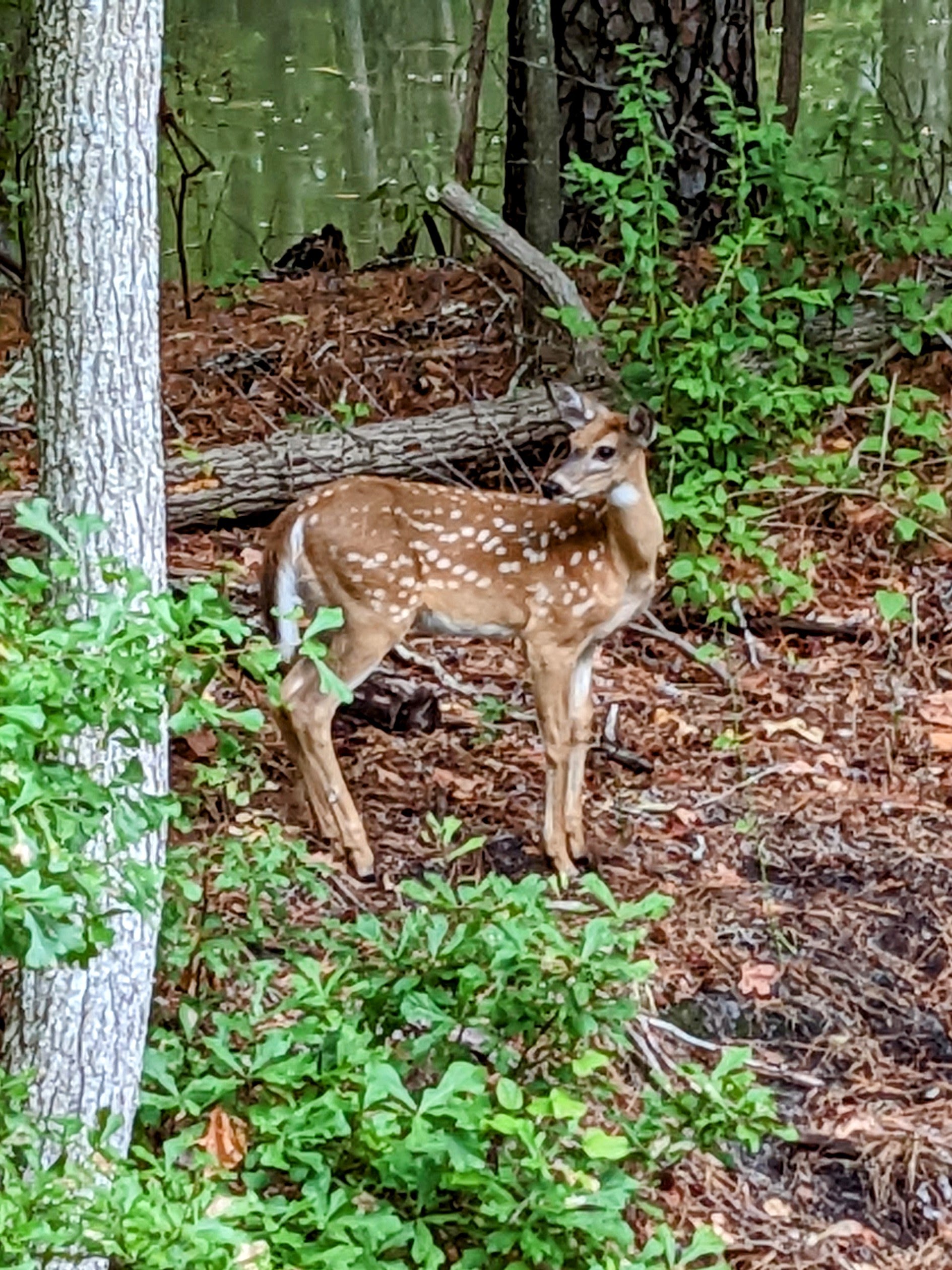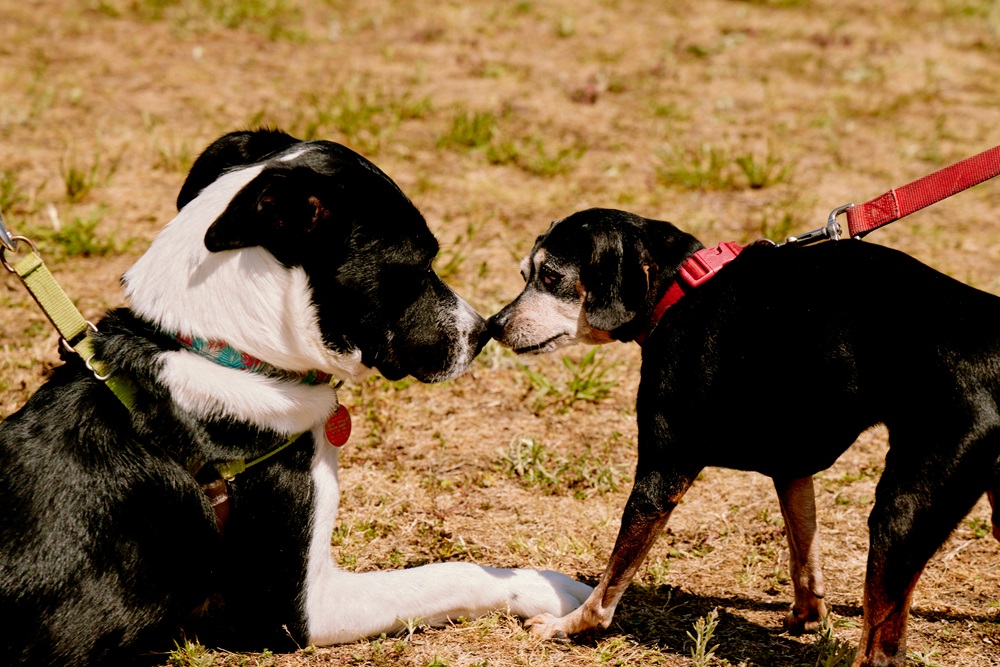Outdoor Delaware is the award-winning online magazine of the Delaware Department of Natural Resources and Environmental Control. Articles and multimedia content are produced by the DNREC Office of Communications.
Roughly two-thirds of American households own pets, the vast majority of which are dogs or cats. It’s easy to understand why pets are so popular — they can be a great source of comfort, and many are just as much a part of the family as human members.
Of course, dogs and cats are not the only pets people might have. Some also own horses, fish, reptiles, rodents, amphibians or birds. For a few, even these are not enough — they want something unique, such as a raccoon, bobcat or deer. Mike Tyson famously owned a tiger, after all!
But, according to experts at the Delaware Department of Natural Resources and Environmental Control, keeping some of these more unusual animals as pets can be harmful to both the owner and the critter itself.

“We’re really cutting out their survivability when we attempt to take control,” said Sam Millman, a deer biologist with the DNREC Division of Fish and Wildlife. “These animals rely on each other to learn how to properly survive their natural world, and when we try to take them out of that they become almost defunct. They don’t know how to survive.”
There are a number of reasons why bringing non-domesticated animals into your household is a bad idea, starting with what Millman said.
Many wild animals learn essential elements of survival from their parents, things that have been passed down for countless generations. Critters that are taken from the wild and raised by humans are more likely to approach predators without fear and generally struggle to find food for themselves, both of which can easily spell disaster for them.
People often do not know what to feed wild pets and thus end up providing food that is not particularly good for them, Millman said, relaying a story of someone who kept a deer as a pet and fed it loads of corn. While by itself corn is not bad for deer, too much can be harmful. Specifically, it can cause a deer’s hooves to grow abnormally, making it harder to walk and ultimately easier to be captured and eaten by predators.
Animals may carry diseases that can be transmitted to humans, some of them serious. Conversely, they could also pick up diseases from being around humans.
Of course, injury is a real threat. Even an animal you brought in as a baby and have raised ever since with great affection is still wild. After all, it took many generations for dogs and cats to become domesticated.
As they get older, previously pleasant pets can become aggressive, especially breeding-age males.
“So while you may have had say this raccoon that was seemingly nice and docile and played and all that stuff, suddenly when its testosterone surges — or even in the case of the females — it may not be as pleasant as a pet as it would have been,” said Joe Rogerson, an environmental program manager in the Division of Fish and Wildlife who oversees the Species Conservation and Research Program.
Property damage is also possible. Millman said he knew of a man years ago who attempted to keep a fawn in his truck (yes, in the cab), only for the ungulate to badly damage the interior, tearing up the seats and the steering wheel.
There’s also the simple fact it’s illegal in Delaware to keep wild animals as pets. State regulations explicitly forbid Delawareans from owning “native wildlife,” with an exception for wildlife rehabilitation experts, who must hold permits from DNREC to care for the animals.

Come springtime, when many species are giving birth, DNREC will hear of someone who has taken in a wild animal such as a fox or blue jay seemingly weekly, Rogerson said. Generally, these are people who stumble across a baby animal they believe is injured or has been abandoned by its parents and would die if left alone, such as a baby bird that has apparently fallen from its nest.
The only problem, experts said, is that this assumption is incorrect. Mother deer, for instance, will leave their fawns alone while they look for food. As for avians, this is part of the normal process of young birds learning how to fly. They can generally make their way back to the nest, and at least one parent is often within eyesight, contrary to what a casual passerby might assume.
Jordan Brown, the Division of Fish and Wildlife’s raptor, grassland and forest bird biologist, said she can point to a number of instances of Delawareans keeping passerines like cardinals, finches or crows.
“The Migratory Bird Treaty Act and State Code (Title 7 Chapter 7 § 734) prohibit the catch, kill, possession of or sale of these birds,” she said. “State law also applies to the rehabilitation and care of wildlife and appropriate permits are required. Additionally, the expert care of wild birds, especially young birds, is around the clock and takes thorough training, as well as specific equipment, food, supplements and enrichment to provide a safe, healthy and adequate life for a wild bird. Injured birds should seek immediate medical attention from a licensed wildlife rehabilitator. For Delaware, the sole avian rehabilitator is Tri-State Bird Rescue & Research in Newark.”
Brown encouraged anyone who spots a sick or dead wild animal to report it to DNREC.
DNREC often learns about people keeping wild pets from concerned friends or family members of the owner. Fortunately, this generally happens very soon after the individual has taken the animal in, and thus DNREC biologists are sometimes able to take possession of the creature and release it back to where it was originally found, presumably to the delight of the worried parents.
If it’s been more than a few days, then the animal might have to go to a wildlife rehabilitation center, where it will be carefully raised in a controlled environment until it is old enough to be set free. Exactly what age that is varies from species to species.
The agency provides education to the public where possible, informing would-be Good Samaritans while their concern is admirable, the best thing they can do is generally stay out of the way and let nature take its course. On occasion, such as for repeat offenders, Fish and Wildlife Natural Resources Police will issue fines for illegal animal possession.

“Usually people just think they’re doing the right thing, that the animal needs intervention to survive,” Rogerson noted.
A few times a year, DNREC gets calls from residents interested in acquiring wild animals such as skunks as pets from breeders in another jurisdiction where possession is legal. In that case, according to Rogerson, the agency informs the inquirer this is not allowed and generally gives them a chance to return the animal if they have already purchased it, though people usually reach out before they actually begin the acquisition process.
Confiscating wild animals from residents is never fun, Rogerson said. While DNREC biologists or police officers can explain owning such creatures is illegal and can be harmful to both the owner and the animal, the individual may have grown attached to their pet.
Unfortunately, in some cases, the animal is too far gone to ever be safely released to the wild. That’s why it is important to always call DNREC before adopting any sort of atypical pet or really taking any action involving a wild animal at all, Rogerson emphasized.
State law does contain limited exceptions enabling, for instance, a science teacher to capture and raise a painted turtle or bullfrog eggs in their classroom, but in general people should speak with an expert first.
Non-native wildlife fall under the jurisdiction not of DNREC but of the Delaware Department of Agriculture, meaning anyone wanting to adopt, say, a monkey of some kind must go through that agency to obtain the requisite permits.
There’s one key element to all this to remember, as succinctly summed up by Rogerson: “The catchphrase that we have is to keep wildlife wild and if you care, leave them alone.”
Related Topics: animals, fish and wildlife, nature, pets, wildlife